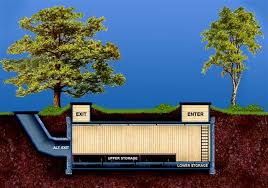Using Shipping Containers As Underground Shelters?
There are endless possibilities when it comes to the uses for shipping containers. Steel shipping containers are one of the cheapest economical underground bunker or storm shelter solutions. Shipping containers come in many lengths but the typically sizes are 20ft/30ft/40ft/&50ft. The 20’ and larger containers are perfect for Underground bunkers but any size can be modified to fit your unique requirements.
Most shipping containers are made from reusable steel. These steel containers are ideal for many uses which is why do it yourselfers (DIY) bunker builders typically select these units. Shipping containers can be stacked up to 20 boxes high when empty but we don’t recommend more than a couple.
Find Your Shipping Container Here:
Shipping Containers already come with a floor, walls, and a ceiling. Think of them as the mobile home of underground shelters. All that’s needed to finish out your shelter bunker are the walls and any extra furnishings you wish to finish your underground shelter out with. Buying a shipping Container for your underground shelter is by far the cheapest alternative to having to construct or build it out of poured concrete, concrete blocks, steel, etc and the peace of mind that comes with knowing you and your family will always be save in any event from a simple storm to an apocalyptic event is worth the price tag.
One of the more important parts of building preparation is making sure you reinforce the entire container against the pressure of the ground. This will take some work in the beginning of the building process, as the sides and top will need secondary reinforcement. However you choose to complete your container, reinforcement depends upon your preference of materials: bricks, cement, wood framing, or additional metal. This preparation will protect your container during excessive rains, possible flooding and, to a point, earthquakes. To make the most informed decision for your container, research the benefits of the materials and how each reacts to your project’s specific environment.






